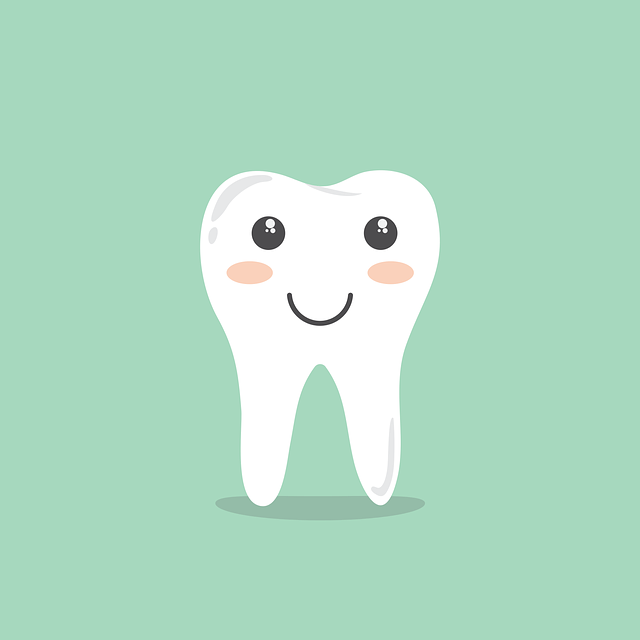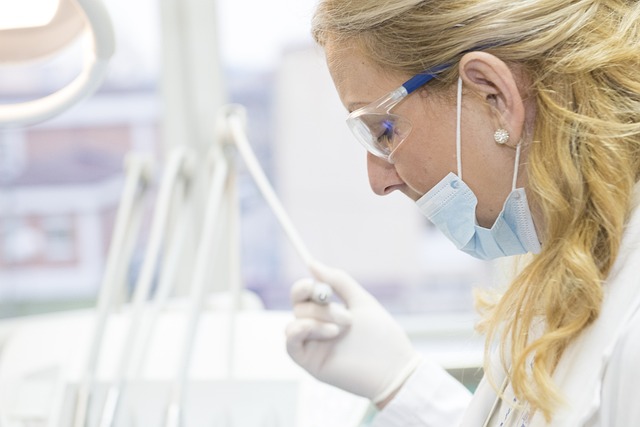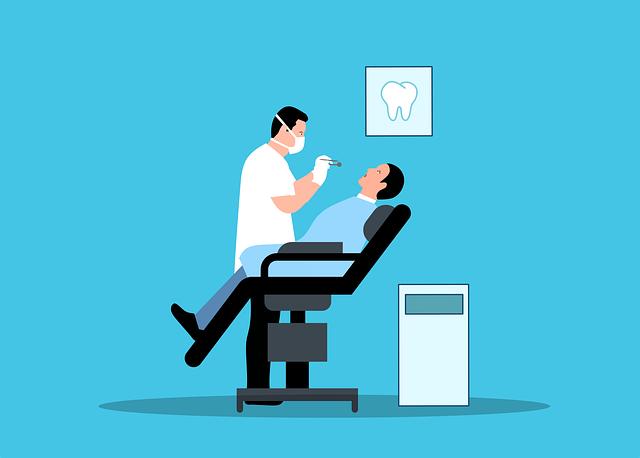When Can I Start Using Mouthwash After Tooth Extraction?
Have you recently undergone a tooth extraction and find yourself wondering, “When can I start using mouthwash?” We understand that taking care of your oral hygiene is essential, especially after dental procedures. The healing process after a tooth extraction requires careful attention, and knowing when it’s safe to introduce mouthwash into your routine is crucial. In this article, we will guide you through the recommended timeline and provide helpful advice to ensure your post-extraction experience is as comfortable as possible. So, let’s dive in and explore when you can start using mouthwash after a tooth extraction.
1. Understanding the importance of mouthwash after tooth extraction
Mouthwash plays a vital role in the recovery process after tooth extraction. Here are a few reasons why using mouthwash is important:
- Promotes healing: mouthwash helps to reduce the risk of infection and keeps the extraction site clean. It can prevent the buildup of harmful bacteria, which may lead to complications and delayed healing.
- Reduces irritation: rinsing with mouthwash helps soothe the gums and reduce inflammation in the surrounding area. This can alleviate discomfort and promote a faster recovery.
- Kills bacteria: many mouthwashes contain antibacterial agents that effectively kill bacteria in the mouth. This is especially beneficial after tooth extraction, as it helps maintain oral hygiene and minimize the chances of developing an infection.
When using mouthwash after a tooth extraction, it’s important to follow these guidelines for optimal results:
- Wait 24 hours before using mouthwash to allow for blood clot formation at the extraction site.
- Dilute the mouthwash with water according to the instructions on the bottle, especially if it has an alcohol content.
- Rinse gently, swishing the solution around your mouth for the recommended duration, typically 30 seconds to 1 minute.
- Avoid vigorous rinsing or spitting forcefully, as it may dislodge the blood clot.
- Repeat this routine 2-3 times a day, after meals and before bedtime, until your dentist advises otherwise.
By incorporating mouthwash into your post-tooth extraction care routine, you can aid the healing process, prevent complications, and promote good oral hygiene. Remember to consult with your dentist for personalized advice and recommendations specific to your recovery needs.

2. How soon can you start using mouthwash after a tooth extraction?
After a tooth extraction, it is important to take proper care of the extraction site to promote healing. One common question that arises is when you can start using mouthwash again. While it is important to maintain good oral hygiene, it is crucial to wait for the appropriate time before introducing mouthwash into your routine.
Here are some key points to keep in mind:
- Wait at least 24 hours before using mouthwash after a tooth extraction. This allows the blood clot to form properly and reduces the risk of dislodging it.
- Choose an alcohol-free, mild mouthwash that doesn’t contain any harsh chemicals. These can help prevent infection and maintain a clean environment in the mouth without causing irritation.
- Use warm saltwater rinses as an alternative to mouthwash during the first 24 hours. Dissolve half a teaspoon of salt in 8 ounces of warm water and gently swish it around your mouth, being careful not to spit forcefully.
Remember, everyone’s healing process may vary, so it’s always best to consult with your dentist before resuming mouthwash or any other post-extraction care. By following these guidelines, you can ensure a smooth recovery and minimize any complications. Take it easy, practice good oral hygiene, and before you know it, you’ll be back to enjoying a fresh and healthy smile!

3. Factors to consider before introducing mouthwash into your oral care routine
Mouthwash can be a great addition to your oral care routine, but there are a few factors to consider before incorporating it into your daily regimen. Here are some important points to keep in mind:
- Consult with your dentist: Before introducing mouthwash, it is always recommended to consult with your dentist. They can provide personalized advice based on your oral health and any specific concerns you may have.
- Choose the right type of mouthwash: There are various types of mouthwashes available, each with their own benefits. Whether you’re looking to freshen your breath, prevent cavities, reduce plaque buildup, or reduce gingivitis, make sure to choose a mouthwash that caters to your specific needs.
- Read the labels: It’s essential to read and understand the instructions and labels on the mouthwash bottle. Look for products that have been approved by dental associations and check for any potential allergens or adverse effects.
Remember, mouthwash should not replace regular brushing and flossing, but rather complement your oral hygiene routine. If used correctly and in conjunction with other oral care practices, mouthwash can be a valuable tool in promoting a healthier mouth and fresher breath. However, it’s always best to discuss any concerns or questions you have about mouthwash with your dentist for personalized guidance.

4. The benefits of using mouthwash post tooth extraction
After a tooth extraction, it is crucial to follow proper oral care practices to promote healing and prevent infection. One highly beneficial addition to your oral hygiene routine is using mouthwash. Here are some key advantages of incorporating mouthwash into your post-extraction care:
- Kills bacteria: Mouthwash contains antibacterial agents that help eliminate harmful bacteria, reducing the risk of infection. An alcohol-based mouthwash is particularly effective in killing germs.
- Reduces discomfort: Rinsing your mouth with a gentle, alcohol-free mouthwash can provide relief by soothing the extraction site and minimizing discomfort. Look for a mouthwash specifically designed for post-extraction use.
- Prevents dry socket: Dry socket is a common complication after a tooth extraction where the blood clot that forms in the extraction site dissolves or dislodges, exposing the underlying nerves and bone. Using a mouthwash recommended by your dentist can help keep the area clean and prevent dry socket from occurring.
In addition to these key benefits, using mouthwash can also freshen your breath, promote healing, and provide an overall sense of cleanliness. Remember, always consult your dentist for specific recommendations on which mouthwash is best suited for your post-extraction care.

5. Guidelines to follow when using mouthwash after a tooth extraction
After a tooth extraction, it’s important to take proper care of your mouth to ensure proper healing and minimize the risk of infection. Mouthwash can be an effective tool in promoting oral hygiene during this time. Here are some :
- Wait 24 hours: It’s crucial to wait at least 24 hours after the tooth extraction before using any mouthwash. This allows the blood clot to form and promotes healing.
- Choose the right mouthwash: Opt for an alcohol-free, antiseptic mouthwash. Alcohol can irritate the extraction site and delay healing. Look for a mouthwash with antimicrobial properties to reduce the risk of infection.
- Gentle rinsing: When you’re ready to use mouthwash, pour a small amount into a cup and dilute it with water if necessary. Gently swish the solution around your mouth for about 30 seconds, keeping in mind to avoid vigorous rinsing or spitting to prevent dislodging the blood clot.
- Timing matters: Do not use mouthwash immediately after brushing your teeth, as it may wash away the protective layer of fluoride from toothpaste. It’s best to wait for at least 30 minutes.
By following these guidelines, you can effectively incorporate mouthwash into your oral care routine after a tooth extraction. However, it’s important to consult your dentist for personalized advice and any specific instructions related to your extraction.
6. The ideal mouthwash options for a quicker recovery after tooth extraction
After undergoing a tooth extraction, it is crucial to take proper care of your oral hygiene to ensure a speedy recovery and minimize the risk of complications. One effective way to maintain oral health is by incorporating mouthwash into your post-operative care routine. By using an appropriate mouthwash, you can alleviate discomfort, reduce the chances of infection, and promote faster healing. Here are some ideal options to consider:
- Antiseptic mouthwash: Look for mouthwashes that contain antiseptic ingredients like chlorhexidine or hydrogen peroxide. These ingredients help kill bacteria in the mouth, reducing the risk of infection. Be sure to follow the recommended usage instructions provided by your dentist.
- Saltwater rinse: An easy and cost-effective option, rinsing your mouth with warm saltwater can provide relief and aid in healing. Mix half a teaspoon of salt with eight ounces of warm water and swish it gently in your mouth for 30 seconds, then spit it out. Remember to avoid swallowing the mixture.
- Alcohol-free mouthwash: Alcohol-based mouthwashes can irritate the surgical site and impede the healing process. Opt for an alcohol-free alternative that is gentle on the gums while still maintaining antibacterial properties.
By choosing the right mouthwash and incorporating it into your daily routine, you can promote a quick and comfortable recovery after a tooth extraction. Remember to consult your dentist or oral surgeon for personalized recommendations based on your specific needs and circumstances.
7. Common concerns and misconceptions surrounding mouthwash and tooth extraction
When it comes to mouthwash and tooth extraction, there are often several concerns and misconceptions that patients have. However, it’s important to separate fact from fiction in order to make the best decisions for your oral health. Let’s address some of the most common concerns:
1. Can I use mouthwash immediately after a tooth extraction?
- Contrary to popular belief, it’s generally recommended to avoid using mouthwash directly after a tooth extraction as it can disrupt the formation of blood clots and hinder the healing process.
- Instead, it’s advised to wait for at least 24 hours before gently rinsing your mouth with a saltwater solution, as directed by your dentist.
2. Is mouthwash a suitable replacement for brushing and flossing?
- No, mouthwash should never be considered as a substitute for regular brushing and flossing.
- While mouthwash can provide additional benefits like fresher breath and reduced bacteria, it should always be used as a complementary step in your oral hygiene routine.
- Brushing twice a day and flossing daily remain the cornerstone of maintaining optimal oral health.
By debunking these misconceptions, you can ensure you’re taking the right steps post-tooth extraction and using mouthwash effectively as part of your oral care routine. If you have any further concerns or questions, don’t hesitate to consult your dentist for personalized guidance.
8. Tips to maximize the effectiveness of mouthwash after tooth extraction
After a tooth extraction, using mouthwash to clean your mouth can help promote healing and prevent potential infections. Here are some tips to maximize the effectiveness of your mouthwash during the recovery process:
- Choose the Right Mouthwash: Opt for an alcohol-free mouthwash specifically designed for sensitive mouths or one recommended by your dentist. These options are gentler and less likely to cause irritation or stinging.
- Timing is Key: Wait 24 hours after your extraction before introducing mouthwash into your oral care routine. This gives the blood clot time to properly form, reducing the risk of complications.
- Follow the Instructions: Many mouthwashes have specific usage instructions, such as diluting with water or swishing for a certain amount of time. Make sure to read and follow these directions to ensure optimal results.
- Appropriate Mouthwash Technique: Gently swish the mouthwash around your mouth for the recommended duration, making sure to cover all areas, including the extraction site. Avoid vigorous rinsing to prevent dislodging the blood clot.
Remember, mouthwash should complement your oral hygiene routine, not replace it entirely. Continue to brush your teeth gently twice a day and floss carefully to keep your mouth clean and aid in the healing process. If you experience any unusual symptoms or have concerns, don’t hesitate to contact your dentist to discuss your progress.
9. Expert advice on integrating mouthwash into your dental hygiene routine post extraction
After a dental extraction, it’s important to take extra care of your oral health to prevent any complications and promote speedy healing. One effective way to enhance your dental hygiene routine is by incorporating mouthwash into your daily regimen. Here, we present some valuable advice from dental experts on how to integrate mouthwash into your post-extraction dental care routine:
Choose the right mouthwash:
- Look for an alcohol-free mouthwash to avoid any stinging or burning sensation on the surgical site, which can cause discomfort.
- Opt for a mouthwash that contains antiseptic properties, such as chlorhexidine, to help prevent infection and kill bacteria effectively.
- Consider using a mouthwash that features fluoride, as it can aid in remineralization and strengthen your teeth.
Timing is key:
- Wait at least 24 hours after your extraction before using mouthwash to avoid dislodging the blood clot that forms in the socket, which is essential for healing.
- Use mouthwash after brushing your teeth — not before. Brushing helps remove any food particles or plaque, allowing the mouthwash to reach all areas of your mouth effectively.
- Rinse with mouthwash for about 30 seconds, ensuring that it reaches the extraction site, gums, and all other areas of your mouth.
By following these expert tips, you can make mouthwash an integral part of your dental hygiene routine post-extraction, promoting a healthy and speedy recovery.
10. Maintaining good oral health after tooth extraction: Incorporating mouthwash as part of your daily routine
Maintaining good oral health after a tooth extraction is crucial for promoting proper healing and preventing infections. One effective way to incorporate mouthwash into your daily routine is by choosing the right type and using it correctly.
- Choose the right mouthwash: Look for an alcohol-free mouthwash that contains fluoride. Alcohol-based mouthwashes may cause dryness and irritation, while fluoride helps strengthen teeth and prevent tooth decay.
- Follow the instructions: Read the label and follow the instructions provided by the manufacturer. Generally, you’ll need to rinse with the mouthwash for about 30 seconds. Avoid swallowing the solution, and spit it out gently.
Making mouthwash an integral part of your daily oral hygiene routine offers several benefits:
- Reduced risk of infection: Mouthwash helps kill bacteria and prevents the accumulation of plaque, reducing the risk of infections after tooth extraction.
- Improved breath freshness: Mouthwash can freshen your breath by eliminating bacteria and odor-causing compounds that may be lingering in your mouth.
- Enhanced healing: Incorporating mouthwash into your routine can promote healing by eliminating harmful bacteria that could slow down the recovery process.
Frequently Asked Questions
Q: When can I start using mouthwash after tooth extraction?
A: Great question! After a tooth extraction, it’s important to take special care and follow your dentist’s instructions. Generally, it is best to wait 24 hours before using mouthwash to allow proper healing and minimize the risk of complications.
Q: Why do I need to wait before using mouthwash?
A: Waiting for 24 hours after tooth extraction allows the blood clot to form and stabilize in the socket where your tooth was removed. Mouthwash, depending on its ingredients, can have strong antibacterial properties that may disrupt the formation of this clot, leading to a condition called dry socket or delayed healing.
Q: What is dry socket?
A: Dry socket is a condition that can occur when the blood clot is dislodged or dissolves prematurely. This exposes the underlying nerves and bone, causing severe pain, discomfort, and a delay in the healing process. It’s crucial to prevent dry socket by following proper post-extraction care guidelines.
Q: Can I use mouthwash immediately after having a tooth extraction?
A: It’s generally not recommended to use mouthwash immediately after tooth extraction. Rinsing your mouth too soon could disturb the blood clot, impede healing, and increase the risk of complications. It’s important to follow your dentist’s advice and wait for the appropriate healing period.
Q: Are there specific mouthwashes that are better for post-tooth extraction care?
A: Yes, some mouthwashes are specifically formulated to aid in the healing process after tooth extraction. These products often contain ingredients like chlorhexidine, which has antimicrobial properties. Always consult with your dentist for recommendations on mouthwash suitable for your specific case.
Q: How should I use mouthwash after the healing period?
A: Once the appropriate healing period has passed, your dentist may recommend using a mouthwash to help maintain oral hygiene. Follow the instructions on the mouthwash bottle, but generally, you should swish the mouthwash around your mouth for 30-60 seconds, ensuring it reaches all areas of your mouth. Spit out the liquid and avoid rinsing with water immediately afterward to allow the mouthwash to continue its work.
Q: Are there any precautions I should take when using mouthwash after tooth extraction?
A: Absolutely! To ensure a safe and effective use of mouthwash after tooth extraction, avoid vigorous rinsing or swishing that might disturb the area where the tooth was extracted. Be gentle and take care not to forcefully expel the mouthwash. It’s also important to avoid eating, drinking, or smoking for at least 30 minutes after using mouthwash.
Q: What other post-extraction care should I be aware of?
A: Good oral hygiene practices are vital during the healing process. It’s essential to continue brushing your teeth gently, avoiding the extraction site, and using a soft-bristled toothbrush. Furthermore, following your dentist’s instructions regarding diet, pain management, and any prescribed medications will significantly contribute to a smooth and successful recovery.
Remember, if you have any concerns or questions about using mouthwash or caring for your extraction site, don’t hesitate to reach out to your dentist for personalized advice.
Conclusion
In conclusion, taking care of yourself after a tooth extraction is crucial for a smooth and speedy recovery. While mouthwash can be an effective addition to your oral hygiene routine, it’s important to wait until the appropriate time to start using it. Your dentist or oral surgeon will provide you with personalized instructions based on your unique situation, so always consult with them before incorporating mouthwash into your post-extraction care.
Remember to prioritize gentle brushing, rinsing with saltwater, and avoiding strenuous activities for the first few days following your extraction. This will give your mouth the chance to heal properly and minimize the risk of complications.
Once the initial healing period has passed, your dentist may give you the green light to introduce mouthwash into your recovery routine. Be sure to choose an alcohol-free, antibacterial mouthwash and follow the instructions carefully. Gently swish the mouthwash around your mouth for the recommended duration and spit it out.
Adding mouthwash to your daily oral care can help keep bacteria at bay, reduce the risk of infection, and freshen your breath. However, always remember that mouthwash should complement, not replace, regular brushing and flossing.
By following your dentist’s guidance and practicing good oral hygiene, you’ll soon be able to enjoy the benefits of mouthwash after your tooth extraction, promoting a healthy and confident smile.






